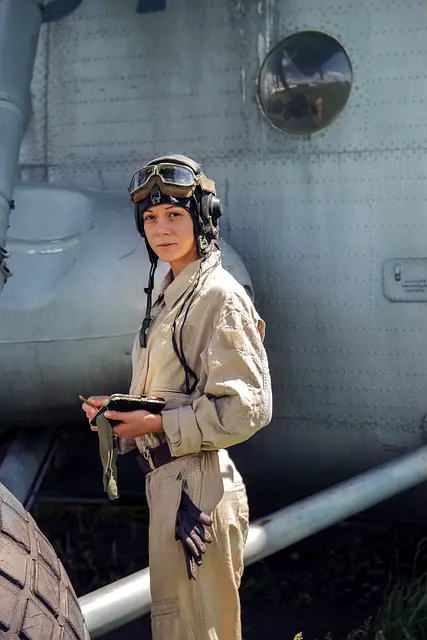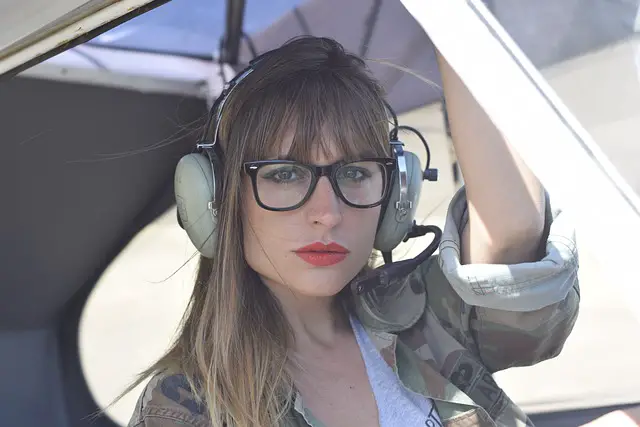Becoming an aviation master, sitting in the cockpit, and sailing through the clouds is your dream if I’m not wrong. Right?
But your vision impairments make you doubt your choices, right?
Let me clear all your doubts for you right here in this article. (Giving you some spoilers already, you need not worry about anything!)
Can Pilots Wear Glasses?
Pilots are normal human beings like us so it’s very natural if they too have some problems with their eyesight. Pilots can wear glasses while operating an aircraft. Many pilots wear corrective glasses to correct vision impairments and ensure optimal visual acuity while flying a plane.
The aviation industry has specific regulations and guidelines regarding vision requirements for pilots to ensure safety. Pilots are required to meet specific visual acuity standards set by aviation authorities. These standards may vary depending on the type of pilot license or rating being pursued.
Pilots can wear glasses and take necessary corrective measures to ensure their vision meets the required standards for safe aviation operations.
However, it’s important to note that there may be certain limitations or restrictions for pilots with severe vision impairments or specific eye conditions. In such cases, additional assessments or evaluations may be required to determine if a pilot is fit for flying.
Can Pilots Wear Contact Lenses?
Yes, pilots are allowed to wear contact lenses while operating an aircraft. Contact lenses provide an alternative to wearing glasses for pilots who require vision correction. Many pilots choose to wear contact lenses due to their convenience, comfort, and ability to provide a wider field view compared to glasses.
Contact lenses can correct various vision impairments, including nearsightedness, farsightedness, and astigmatism. However, pilots need to follow proper hygiene practices and maintain good contact lens care to ensure clear vision and eye health throughout their flights.
But, it’s the same as wearing glasses. You’ll need to comply with the visual acuity standards. As long as pilots meet the required visual acuity standards and can safely and effectively use contact lenses, they are allowed to wear them while flying.
I would also suggest that pilots carry backup eyewear such as a spare pair of glasses, in case of any issues with the contact lenses during flight. Having a backup option ensures that pilots can maintain a clear vision and meet the necessary visual requirements for safe aviation operations.
Can Pilots Wear Glasses in the Military?
Pilots in the military can wear glasses while performing their duties. Similar to civilian pilots, military pilots also have specific vision requirements and regulations that pilots must meet to ensure safe operations.
Military pilots are subject to visual acuity standards set by their respective military branches. These standards may vary depending on the specific role, aircraft, and mission requirements.
Military pilots need to have a clear and accurate vision to effectively operate their aircraft, read instruments, and navigate during missions. The military typically provides thorough medical examinations, including vision tests, to assess a pilot’s visual capabilities and ensure they meet the necessary standards.
In some cases, specific military aviation units may have additional vision requirements or limitations based on the unique demands of their operations.
Can You Be a Fighter Pilot If You Wear Glasses?

Yes, it is possible to become a fighter pilot even if you wear glasses. Many military air forces around the world allow pilots with vision impairments to serve as fighter pilots if they meet certain visual acuity requirements and wear corrective eyewear.
The specific standards and regulations may vary depending on the country and the military branch. However, generally, if you have correctable vision with glasses or contact lenses and meet the required visual acuity standards, you can pursue a career as a fighter pilot.
Candidates undergo thorough medical examinations, including vision tests, to assess their suitability for flying high-performance aircraft.
If you are interested in becoming a fighter pilot and wearing glasses, it is recommended to research the specific requirements of the military branch or air force you are interested in joining. You can surf the internet about the visual acuity requirements for being a fighter pilot in your country.
Basic Vision Requirements for Pilots?
The basic vision requirements for pilots can vary depending on the country and the specific type of pilot license or rating being pursued. There are some general vision requirements commonly found in aviation in most countries which are;
- Having a 20/20, or better visual acuity.
- Refractive errors such as myopia, hyperopia, and astigmatism are accepted as long as they are properly corrected with glasses, contact lenses, or refractive surgery.
- Good color vision is essential for pilots to identify and differentiate between various color-coded instruments, lights, and signals in the cockpit. Most aviation authorities require pilots to have normal color vision or, in some cases, allow for mild color vision deficiencies that don’t significantly impair their ability to distinguish important colors.
- Pilots are typically assessed for their ability to perceive depth, and certain tests may be conducted to evaluate this aspect of vision.
- Pilots need to have a sufficient field of peripheral vision to maintain situational awareness and detect potential hazards in their surroundings. While the specific requirements can vary, pilots are generally expected to have a wide enough peripheral vision to effectively scan the cockpit instruments and monitor the external environment.
These are the basic requirements for becoming a pilot. These requirements are interpreted accordingly as per your country’s aviation sector’s requirements but these are the musts.
Conclusion
Wearing glasses or corrective eyewear does not hinder individuals from pursuing a career as a pilot, including military pilots and fighter pilots.
Aviation authorities recognize that many aspiring aviators may have refractive errors and have established clear guidelines to ensure that vision requirements are met with appropriate corrective measures. With advancements in eyewear technology and the availability of contact lenses, pilots with vision impairments can achieve the necessary visual acuity and meet the standards set by aviation authorities.
When buying sunglasses as such, you can have a few questions, such as, why pilots should not wear polarized sunglasses? or when flying why do pilots wear aviators? There are reasons as to why, if you wanna check out the details, then you’re just a click away from knowing some important details.
Aspiring aviators are encouraged to pursue their dreams with confidence, knowing that their refractive errors need not limit their potential in the thrilling and rewarding field of aviation. If you wanna look at some of the best aviation sunglasses, then here are a few options, that are absolutely perfect, when soaring high in the sky!
I hope this article answered all your doubts about becoming a pilot. Don’t let your vision deficiencies hold you back from pursuing what you want to, All the best!

